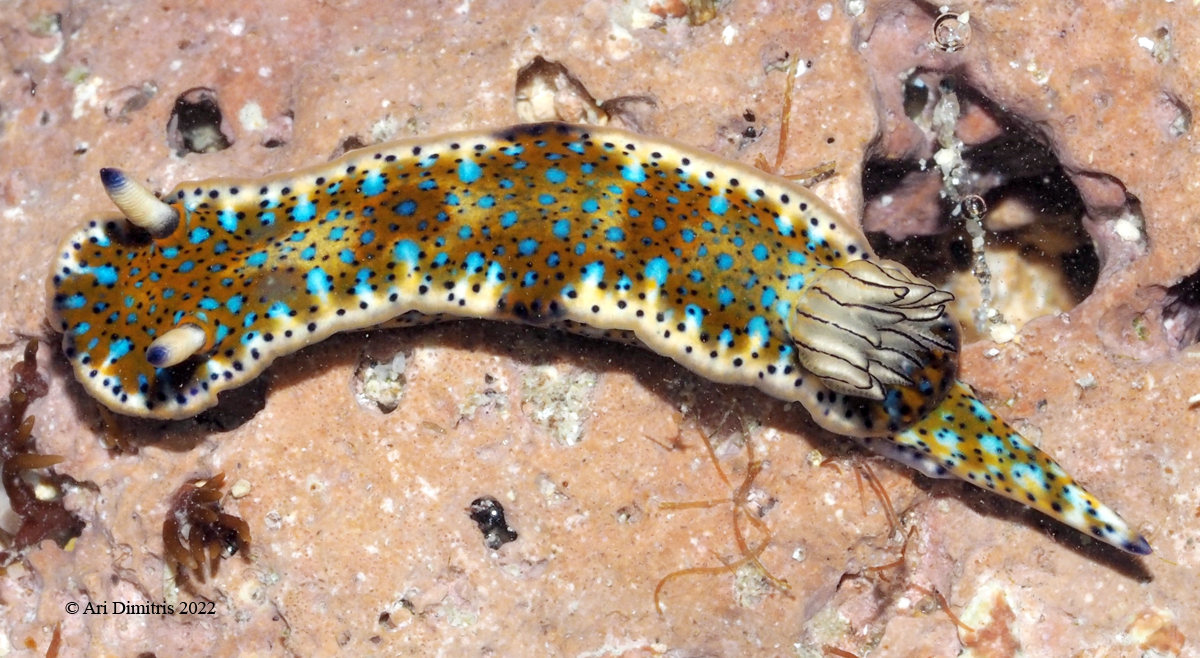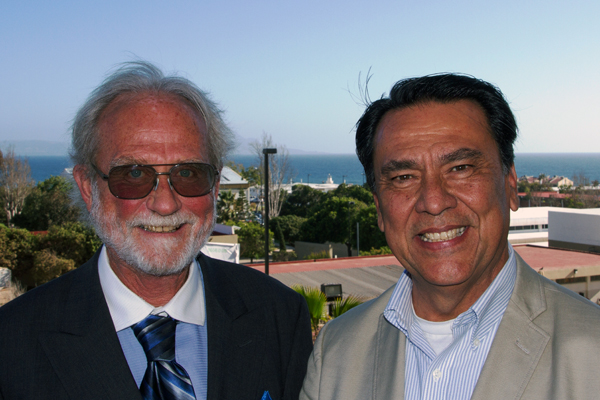 |
Felimare olgae
Image courtesy of Ariane Dimitris
Lauderdale-by-the-Sea, Florida, 18 May 2022, at about 16' depth
Felimare olgae (Ortea & Bacallado, 2007)
An eye-popping, flamboyantly foudroyant species. When Ari Dimitris sent me photos of this species, I knew it had to be a BOW!
Dorsum with a background color of yellowish cream, upon which stand out attention-grabbing splotches (“sobre la que destacan llamativas manchas,” in the original Spanish description) of bright sky-blue and black dots. Foot similarly colored. Rhinophores white with purple apices. Gills white with a black line along the rachis of each plume. Genital aperture surrounded by an orange to yellow-orange colored ring. Size up to 60 mm long.
Labial cuticle armed with simple rodlets. Radula formula 56 x 60.0.60 in a 25 mm animal. Lateral teeth increase in size until about tooth 40. The four outermost laterals form a series in decreasing size.
The egg mass is a ribbon of 1½ whorls, some 5 mm in height. Eggs orange-colored. Their large size (more than 300 µm) suggests direct development. Ortea & Bacallado (2007: 57) note that this condition has been reported for only two other Caribbean chromodorids, Felimare nyalya (Marcus & Marcus, 1967) and Felimare lilyeveae (Alejandrino & Valdés, 2006).
Over the past several years, Ari has found over a dozen Felimare olgae, either singly or in groups of 2-3, between Key Largo and Pompano Beach, southeast Florida. She wrote me that slugs of this species are always out in the open, not hiding under rocks like Felimida binza (Marcus & Marcus, 1967) and Felimida clenchi (Russell, 1935) usually are.
This species feeds on the lobate demosponge Dysidea etheria de Laubenfels, 1936.
Type locality Punta Majana, Golfo de Batabanó, Cuba. An international species, it is also known from Puerto Morelos, Quintana Roo, Mexico, and Florida, USA, in the shallow subtidal to 15 m deep. The original report and illustration of this species from Florida (Valdés et al., 2006: 166-167) was published before its description, and identified the species as Hypselodoris sp. 4.
Felimare olgae was named in honor of Olga Ucelay Sabina (who died at the age of 60), the wife of co-author Juan José Bacallado.
References
Ortea, J. & J.J. Bacallado. 2007. Descripción de una nueva especie de Hypselodoris Stimpson, 1855 (Mollusca: Nudibranchia: Chromodorididae) nombrada en homenaje a Olga Ucelay Sabina. Revista de la Academia Canaria de Ciencias 18(4): 53-60.
Valdés, Ángel, Jeff Hamann, David W. Behrens & Anne DuPont. 2006. Caribbean Sea Slugs: A Field Guide to the Opisthobranch Mollusks from the Tropical Northwestern Atlantic. Sea Challengers Natural History Books, Etc., Gig Harbor, Washington. vii + 289 pp.
Imperial Beach, Calif
Aug., 2020
Send Hans email at hansmarvida@sbcglobal.net
Photo by Craig Hoover.
 |
|